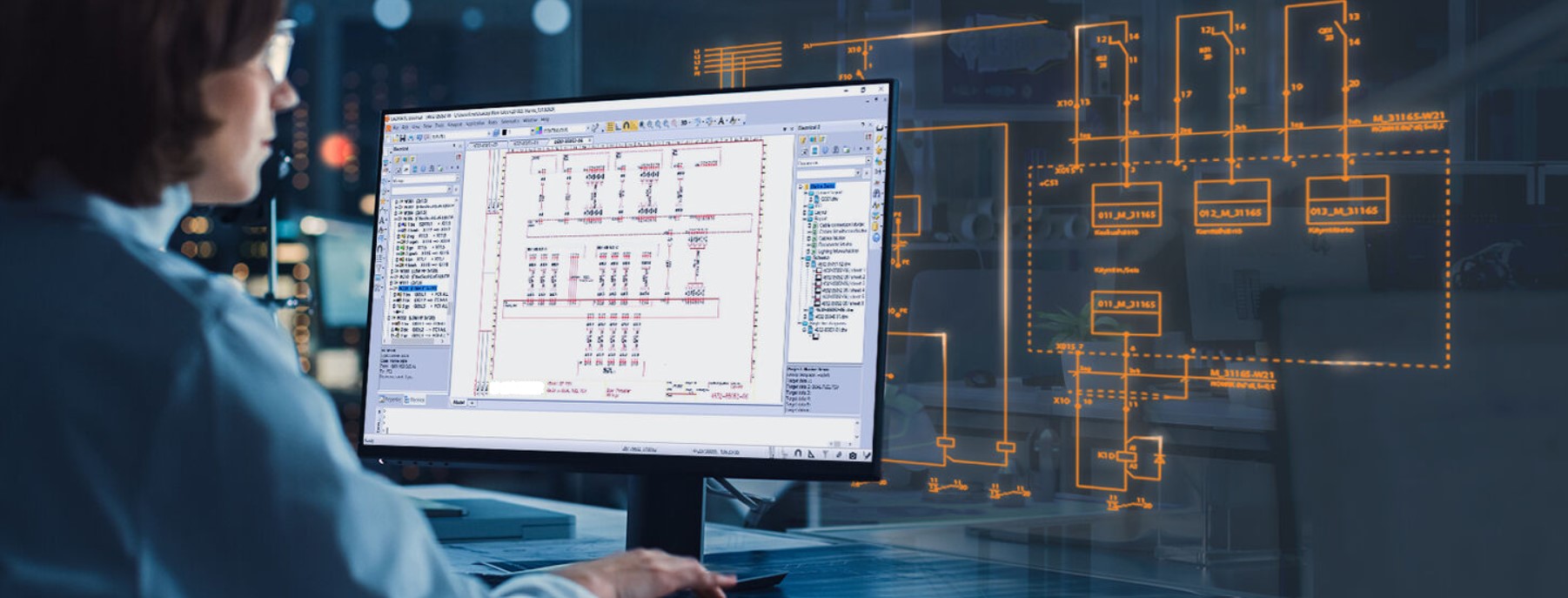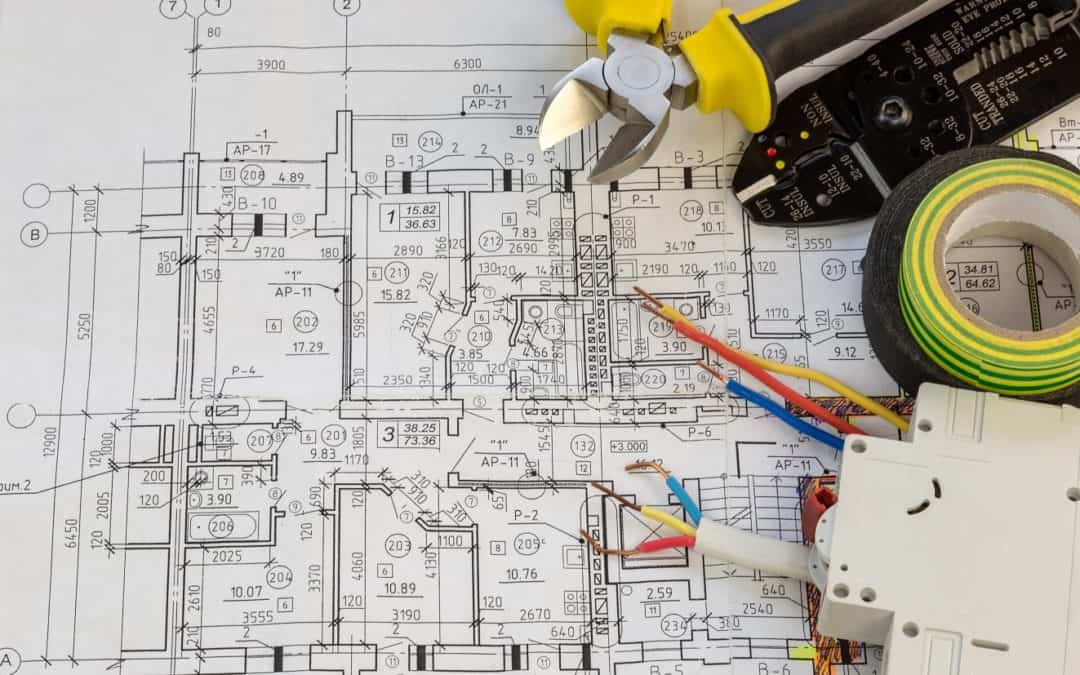Optimizing Industrial Electrical Design for Complex Operations
Optimizing Industrial Electrical Design for Complex Operations
Blog Article
Innovative Electrical Design Solutions for Modern Facilities
The evolution of modern-day infrastructure requires cutting-edge electrical design solutions that not just improve operational effectiveness however additionally address sustainability challenges. As urban environments grow significantly complicated, integrating technologies such as wise grids and eco-friendly power sources becomes paramount. These improvements not just guarantee to enhance power intake however additionally foster resilience versus future demands. The landscape of electric design is going through fast makeover, prompting a closer assessment of emerging trends and their effects for long-lasting framework practicality. What might the future hold for those who accept these innovative techniques?
Importance of Cutting-edge Electrical Design
Ingenious electric design plays a crucial duty in modern facilities, affecting not just performance but also sustainability. As cities evolve and the need for power increases, the demand for innovative electric systems ends up being critical. These systems should not only fulfill present demands however also expect future development and technological advancements.
A well-executed electric design can substantially lower energy usage, therefore reducing operational costs and reducing environmental impact. By including eco-friendly power resources, such as photovoltaic panels and wind turbines, cutting-edge designs can improve energy independence and durability. Additionally, wise grid technologies enable real-time surveillance and management of power circulation, enhancing efficiency and decreasing waste.
Security is another critical aspect of electrical design. Implementing innovative modern technologies and extensive criteria can alleviate threats connected with electric failures, making sure a safe atmosphere for residents and services alike. Additionally, cutting-edge designs assist in versatility, allowing frameworks to incorporate emerging innovations effortlessly.
Key Patterns in Electrical Design
As the landscape of electrical design continues to advance, numerous key fads are forming the future of the industry. One significant pattern is the integration of wise modern technology into electric systems. The expansion of the Internet of Things (IoT) has allowed real-time tracking and control of electric tools, enhancing efficiency and assisting in predictive upkeep.
Another pattern is the expanding emphasis on modular design. This approach permits scalable and flexible remedies, enabling facilities to adapt to changing requirements without comprehensive remodellings. Furthermore, the use of advanced simulation tools and Structure Info Modeling (BIM) is coming to be increasingly common, streamlining the design process and boosting cooperation amongst stakeholders.
In addition, advancements in materials science are bring about the advancement of lighter, much more sturdy, and energy-efficient components. This technology is specifically crucial for high-performance buildings and infrastructure tasks.
Last but not least, there is a marked shift towards data-driven decision-making - electrical design services. Leveraging data analytics assists developers maximize systems for efficiency and cost-effectiveness. With each other, these fads represent a transformative era in electrical design, boosting functionality, sustainability, and durability in modern infrastructure
Sustainable Energy Solutions
Sustainable energy solutions are progressively becoming an important focus in electric design, reflecting a more comprehensive dedication to environmental obligation and resource performance. These options aim to minimize environmental effect while enhancing energy consumption in different facilities, from household buildings to huge industrial facilities.
Among the primary methods involves the integration of eco-friendly energy sources, such as solar panels and wind generators, into electric systems. This not just minimizes dependency on fossil gas but additionally improves energy resilience. In addition, innovative power storage space systems, such as innovative batteries, allow effective monitoring and circulation of energy, making sure that surplus power created during height production can be made use of during high need periods.
Furthermore, energy-efficient design methods are being adopted to improve overall system efficiency. This includes making use of energy-efficient illumination, cooling and heating systems, and clever building technologies that adapt and check power use based upon occupancy and environmental conditions.
Smart Grid Technologies
The application of sustainable energy services naturally results in the exploration of clever grid innovations, read the full info here which play an essential duty in updating electrical systems. Smart grids utilize advanced communication technologies and information analytics to improve the reliability, efficiency, and sustainability of power distribution. By incorporating electronic modern technology with traditional grid infrastructure, these systems promote real-time monitoring, automated control, and improved decision-making capabilities.
Among the crucial functions of smart grids is their ability to accommodate renewable resource resources, such as solar and wind power. This adaptability not just lowers dependence on fossil fuels yet also permits a more decentralized energy production version. Moreover, smart grids enable need reaction programs, where consumers can change their power usage based on real-time rates, therefore promoting energy conservation and reducing peak lots demands.
Additionally, smart grid technologies enhance grid resilience by allowing quicker recognition and resolution of blackouts, ultimately minimizing downtime. With predictive upkeep and analytics, energies can maximize operations and improve solution shipment. As cities and areas remain to develop, clever grid innovations are vital for building a lasting and effective electric facilities that meets the demands of modern-day society.

Future-Proofing Infrastructure
To make sure lasting stability and flexibility, future-proofing facilities is vital in the swiftly evolving landscape of electric design services. As innovation developments and power demands shift, it is essential that electrical systems are developed with adaptability in mind. This requires including scalable services that can suit future upgrades without requiring substantial overhauls.

Additionally, sustainability useful reference must be a cornerstone of future-proofed layouts. Using renewable power sources, such as solar and wind, and maximizing power effectiveness decrease reliance on nonrenewable fuel sources, straightening with worldwide efforts to fight environment adjustment.
Conclusion
By prioritizing effectiveness, flexibility, and sustainability, these solutions attend to the developing demands of power systems. The combination of wise grid innovations and lasting energy solutions improves strength and lowers operational expenses.
A well-executed electrical design can substantially decrease energy consumption, thereby lowering functional prices and reducing environmental influence. By integrating eco-friendly energy sources, such as solar panels and wind turbines, cutting-edge styles can boost power self-reliance and resilience. Furthermore, ingenious power storage systems, such as sophisticated batteries, make it possible for effective management and distribution of energy, making certain that surplus energy generated during height manufacturing can be made use of throughout high demand durations.
Smart grids enable need action programs, where consumers can readjust their power usage based on real-time prices, therefore promoting energy preservation and lowering peak load demands. (electrical engineering design services)
As technology advances and energy needs change, it is vital that electric systems are made with versatility in mind.
Report this page